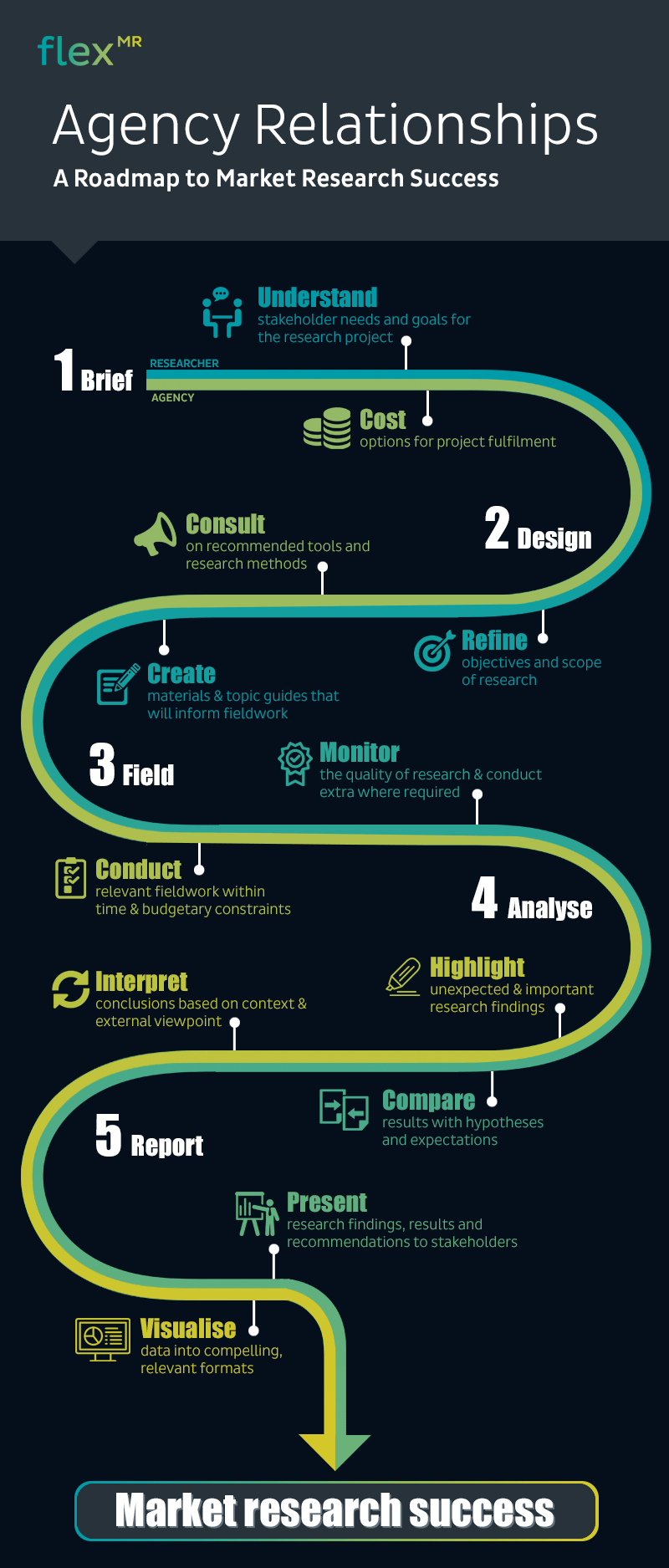The relationship between market research buyers and suppliers has always been notoriously tough to manage. Some of the existing tensions are highlighted in the 2016 Q1-Q2 GRIT report. From agency frustrations of the project based nature of research, to buyer frustrations that stem from a lack of tangible outcome. It’s clear there is a need for a better way.
But what exactly is that better way? That is a difficult question to answer. But we believe it starts with a firm outline of the roles and responsibilities of both research agency and internal research teams. Too often these functions overlap – meaning that precious budget is wasted by duplicating work or waiting for work to commence.
Instead of a polite, but often chaotic relationship layered with subterfuge and frustration – research suppliers and buyers must lay out their expectations from the start. Each has their strengths that should be capitalised on.
Brand research teams bring to the table an expert knowledge of their subject matter, in addition to a host of data (such as existing brand awareness), surrounding context and a deep understanding of the business challenge. Agencies, meanwhile, have a wealth of experience in creative, practical & technical tasks. With that in mind, we’re proposing a new roadmap to market research success, defined by the client/agency relationship.
Tweetable Takeaways
- Research suppliers & buyers must work together to create successful insight (click to tweet)
- Agencies can specialise in practical tasks, leaving research buyers to focus on strategy (click to tweet)
- Both research agency and brand have a vested interest in the success of all projects (click to tweet)
Rethinking Research Agency Relationships

How to Create Successful Relationships
This roadmap should not be revolutionary to researchers or managers. In fact, it details how our most successful projects have been conducted. In our experience, this infographic highlights two important factors that should always be at the back of your mind.
The first is that both researcher and agency start at the same point – with the same level of information. Why is this important? It means that an open relationship, focused on the research problem is present from the start. The relationship is not based on how the agency can sell extra services, or shoehorn a greater brief into view. No, instead all eyes are set on the project in hand – and the success or failure of that project will help researchers determine whether or not to continue a relationship with the agency.
The second point of interest is the tandem nature that work is carried out in. There will be, naturally, varying workloads throughout the project, bottlenecks and different responsibilities between both parties. However, both parties should always be communicating – even if they are not involved in the current research task. This facilitates a better understanding of the project as it progresses and, most importantly, ensures frustrations are not given a chance to build.
What are your top tips for improving the research supplier/ buyer relationship? We’d love to hear opinions from both sides of the table – what do you think can be done better?

















